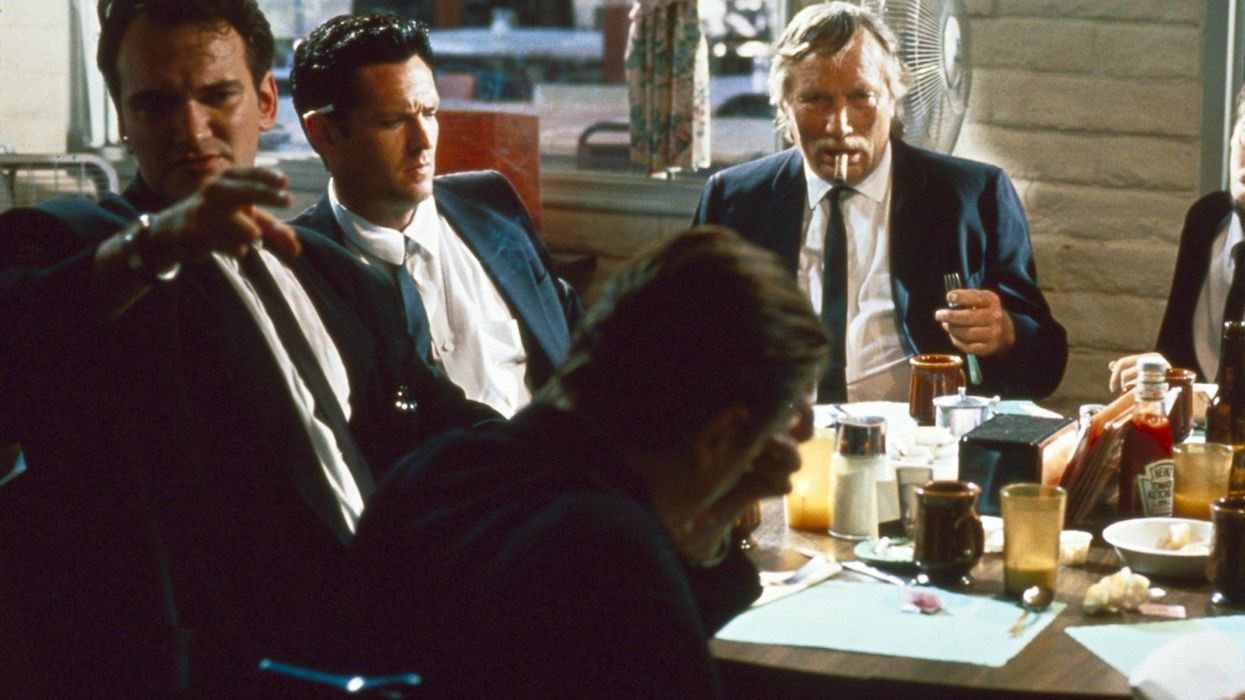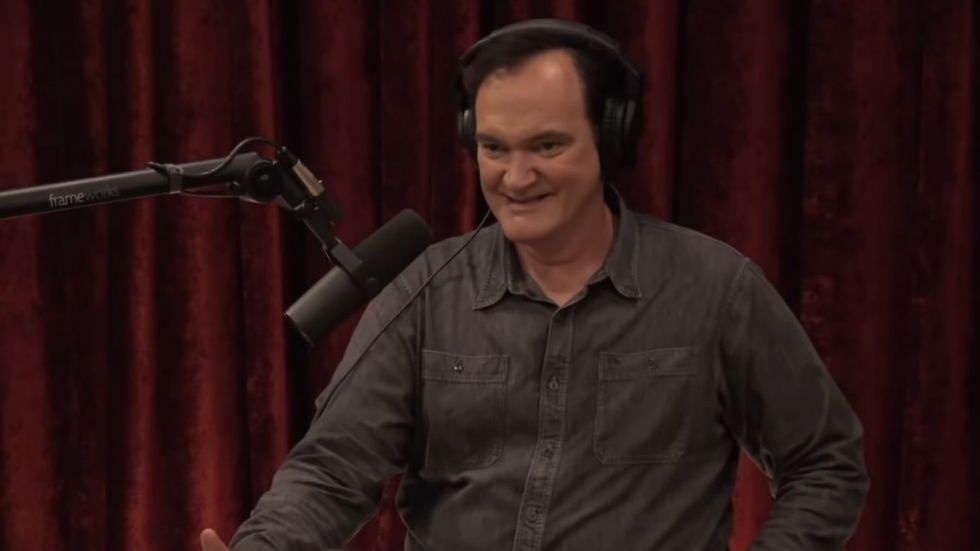Dissecting the Opening Scenes of Quentin Tarantino Movies
This auteur knows how to start a movie.

Reservoir Dogs
I woke up one morning this week and decided to watch a Tarantino movie every day. I started at Reservoir Dogs, and I went all the way through Once Upon a Time...in Hollywood.
There are so many incredible filmmaking tips in Tarantino movies, but today I wanted to focus only on the opening scenes.
We'll go over what makes each of them unique and how they set the audience up for the movie that follows.
Let's dive in.
1. 'Reservoir Dogs'
The opening scene of Tarantino's debut is pure Tarantino gold. A group of sharply dressed criminals sits at a diner, discussing everything from Madonna's "Like a Virgin" to the ethics of tipping.
The scene sets up character and tension that last the rest of the movie. We get Mr. Blonde's psychopathy, Mr. Pink's disdain for authority, and Joe Cabot's role as the mastermind.
You're immediately hooked.
2. 'Pulp Fiction'
Pulp Fiction's opening scene is iconic. "Pumpkin" and "Honey Bunny" burst from their seats in a diner and announce a stick-up. The abrupt shift from casual conversation to armed robbery is vintage Tarantino—shocking, funny, and instantly thrilling.
But it also shows us that even in a boring, casual diner, anything can happen. And anything can happen in this universe and the story.
3. 'Jackie Browne'
The opening of Jackie Brown, while less flashy than his previous films, is no less effective. Over a black screen, we hear Bobby Womack's "Across 110th Street" as the camera slowly follows Jackie Brown. Her weary expression sets a more subdued tone, reflecting the character's struggle as a middle-aged flight attendant.
We see her hustling to get to a job she doesn't want, and come back to her getting busted for smuggling, establishing her arc throughout the movie.
4. 'The Kill Bill Saga'
Released in the same calendar year, these movies, which Tarantino only counts as one, each have different ways of establishing the story that follows.
Kill Bill: Vol. 1's opening is a brutal, black-and-white bloodbath. The Bride lies critically injured, a chilling voiceover from Bill promising revenge for her leaving him. She's shot in the head, setting up the violence we can expect moving forward.
Kill Bill: Vol. 2 switches gears, opening with The Bride in a car delivering a monologue about her mission. It's a stark contrast to the first film's explosive start, but still oozes tension and style, stuff that becomes paramount later in the story.
5. 'Death Proof'
Tarantino breaks his usual mold with the opening of Death Proof. It's laid back, as a trio of women engages in a casual, gossip-filled car ride. It feels like it matches the grindhouse tone he's going for, lulling us into a false sense of comfort he will soon rip away.
But it's a playful film that wants you to have fun right away, so you keep having fun later as things get more and more weird and wild.
6. 'Inglorious Basterds'
This now iconic scene is Tarantino at his most suspenseful. Nazi Colonel Hans Landa interrogates a French farmer, the conversation laced with menacing subtext.
We know he's hiding Jews in his cellar; Landa is trying to figure out if they're there.
The scene stretches on, the tension almost unbearable. We're given a chilling peek at Landa's ruthless cunning. And we set up the story of revenge.
7. 'Django Unchained'
Django Unchained's opening instantly sets it apart. A chained group of slaves is driven across breathtaking landscapes, set to a jarring, anachronistic soundtrack. It's visually arresting, thematically rich, and establishes the film's approach to its sensitive subject matter.
When things settle, we introduce Django and see him get a tase for revenge right away. again, this is all to set the tone and steep you in a world that plays by Tarantino's rules.
8. 'The Hateful Eight'
A stagecoach races through a snowy mountain pass in the opening of The Hateful Eight. Ennio Morricone's ominous score sets the stage for a classic Western setup.
But the coach is stopped by a lone man in the road with a rifle.
We get the threat of violence, but no shots fired. Instead, we see an uneasy bond formed, giving us a world where we understand the stakes and tensions and that no one trusts each other.
9.' Once Upon a Time in Hollywood'
It begins on the set of the television Western Bounty Law, with aging star Rick Dalton (Leonardo DiCaprio) being interviewed. Rick is cocky, but we instantly see his self-doubt when questioned about what his stunt double, Cliff Booth (Brad Pitt) can do.
Then the world changes around Rick, as we move from the black and white western he knew into the late 60s, where the whole world is much grittier and his star is fading.
That's the emotional core of the movie and what drives the rest of the narrative.
10. 'The Movie Critic'
We have no idea what this opening scene is going to be. All we know is that Tarantino was inspired by a real-life movie critic who wrote for a porn magazine in the 1970s. The film will capture the gritty, cynical tone of film criticism from that era.
Tarantino has mentioned that the critic will share similarities with Travis Bickle (Robert De Niro's iconic character from Taxi Driver). Expect a protagonist who is cynical, disillusioned, and possibly volatile.
I can't wait to come back to talk about it here.
Lessons From Tarantino's Opening Scenes

Quentin Tarantino on the Joe Rogan Experience
YouTube
So, what lessons can we take away from all of these scenes? I think there's a bunch, so I tried to outline them below.
- Dialogue-Driven Drama: Most of Tarantino's openings prioritize conversation. The diner scene in Reservoir Dogs, the back-and-forth in Inglourious Basterds, or the car ride in Death Proof all highlight Tarantino's mastery of dialogue. It's a risky approach, as a slow start could alienate audiences, but his snappy, stylized writing creates tension, introduces characters, and delivers exposition in an engaging way.
- Homage & Subversion: Tarantino embraces genre tropes in his openings. We see classic elements like the diner hold-up (Pulp Fiction), the Western standoff (The Hateful Eight), or the revenge setup (Kill Bill). However, he never simply recreates these scenes. He filters them through his unique lens, adding unexpected humor, shocking violence, or anachronistic elements that keep us off-balance.
- Tonal Shifts: Tarantino often plays with audience expectations by switching gears abruptly. The transition from casual banter to robbery in Pulp Fiction, or the shift from mundane conversations to gruesome violence in Death Proof, keeps viewers hooked and reinforces the unpredictability of his stories.
- Focus on Character: Many of his openings spend a significant amount of time establishing core characters. We get crucial details about their personalities, desires, and backstories before the core plot kicks in. Sometimes, like with Hans Landa, this even reveals the central antagonist and their underlying menace.
- Immediate Immersion: Tarantino's openings often drop us into the middle of a situation without much context. This makes us active viewers, working to decipher characters and setting, making the experience more engaging.
- Building Anticipation: His openings often leave us with more questions than answers. Who are these people? What's going to happen next? This creates a delicious tension that keeps viewers glued to their seats, eager for the story to unfold.
- Setting the Style: The aesthetic and mood of his openings instantly tell us what kind of Tarantino ride we're in for – quirky crime drama, over-the-top revenge saga, tense historical thriller.
Quentin Tarantino's opening scenes are iconic for a reason. Whether it's an adrenaline-fueled burst of violence or a slow-burning suspense builder, Tarantino understands that the first impression matters, and he consistently delivers openings that suck us in.
Let me know what you think in the comments.











